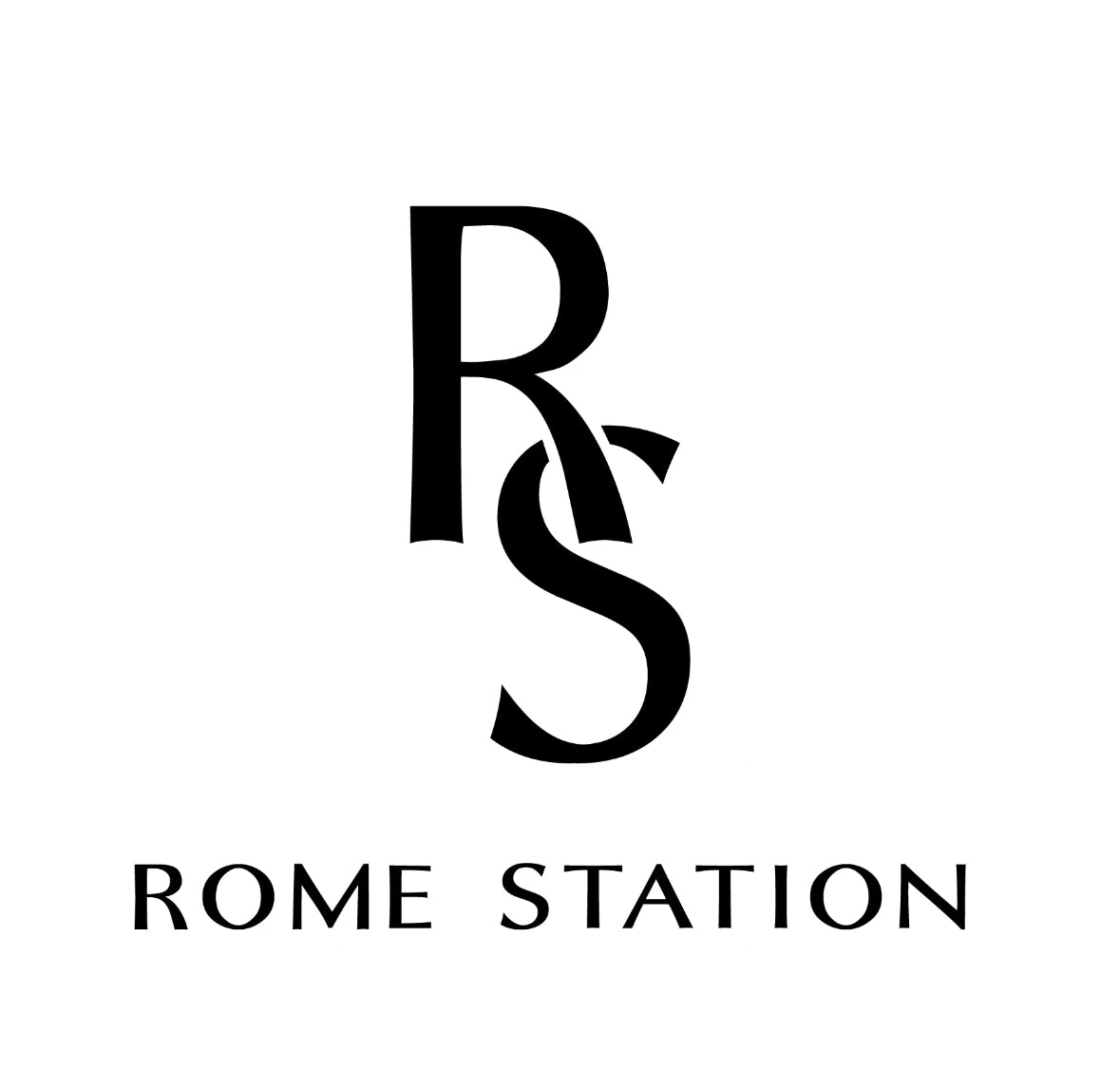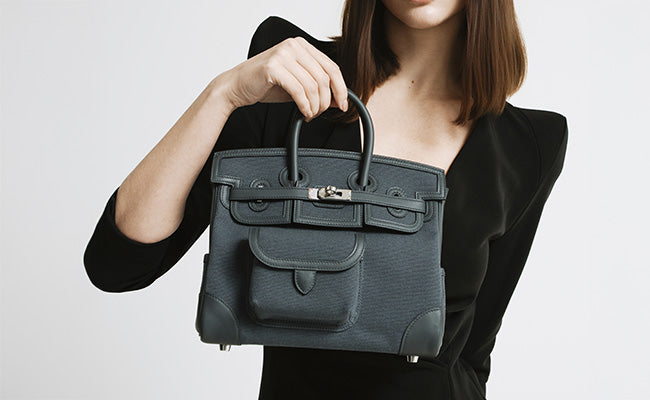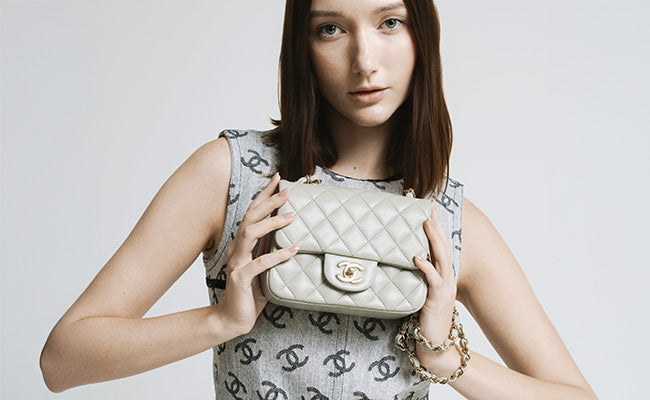
Era‑Correct Packaging: Dust Bags, Boxes, and Tissue Through the Years
Check out our Hermès collection and Birkin bags!
Packaging tells a story that goes way beyond the product inside. With Hermès, the dust bags, boxes, and tissue paper have changed a lot over the decades.
Collectors and enthusiasts pay close attention to these details. Sometimes, getting the era right is the only way to tell a genuine vintage piece from a modern reproduction.
Everyone recognizes those bright orange boxes, but honestly, Hermès packaging has gone through quite a few changes since the 1970s.
Dust bag fabrics and colors, box construction, and tissue paper texture each have era-specific quirks. These weren’t just random decisions; they reflected the brand’s luxury standards, materials on hand, and whatever design philosophy was in vogue.
If you’re collecting, reselling, or just investing in pre-loved Hermès, understanding packaging details isn’t just a fun fact. It’s a major authentication tool and can influence a piece’s timeline and value.
Key Takeaways
- Hermès packaging has changed a lot over the years, and those differences help identify authentic vintage pieces.
- Dust bags, boxes, and tissue paper all have era-specific details that collectors use for authentication and dating.
- Knowing the evolution of packaging is essential if you’re buying, selling, or collecting pre-owned Hermès.
Understanding Era-Correct Packaging for Hermès
Era-correct packaging is a big deal for Hermès collectors. Over 183 years, boxes, dust bags, and materials have all shifted, turning from simple necessities into luxury symbols that affect a piece’s value and authenticity.
Why Era-Correct Packaging Matters
Hermès packaging isn’t just about protection. Every element acts as a timestamp, helping us figure out when a piece was made.
Authentication markers, such as logo placement, color, and material, have changed in pretty systematic ways. Take dust bag logos: sometimes it’s one ring, sometimes two, depending on the era.
Collectors and authentication experts really lean on these details. If you see a 1980s Kelly bag in a 2020s box, that’s a red flag.
The packaging also shows Hermès’ obsession with craftsmanship. Their boxes get just as much attention as their leather goods, with precise construction and quality materials that, honestly, have stayed impressively consistent.
Evolution of Hermès Packaging
A huge shift happened in 1942 during World War II. Émile-Maurice Hermès hit a wall when their usual cream-colored boxes ran out thanks to wartime shortages.
The supplier had only orange boxes. Nobody wanted them. Émile-Maurice just slapped on brown ribbon and the company logo, and, well, accidentally invented fashion’s most recognizable packaging.
The orange shade bounced around a bit before settling into today’s signature hue after the 1960s. Oddly enough, it’s not a Pantone color.
Modern packaging includes:
- Around 188 different box sizes
- Round, rectangular, and square shapes
- Consistent orange with black borders
- Dust bag variations by era
When Hermès tried to trademark their orange in 2005, the EU Office for Intellectual Property said no. Orange was just too general.
Impact on Value and Authenticity
Era-correct packaging can add 15-25% to resale value for vintage Hermès. Collectors specifically look for bags with matching period-appropriate boxes and dust bags.
Missing or mismatched packaging doesn’t make a bag fake, but it does hit the value hard. A pristine 1970s Birkin just isn’t as collectible without its original packaging.
Some collectors don’t store bags in their boxes long-term. Glue can damage leather over time.
Authentication services look at packaging details first. Font, stitching, and material in dust bags all help date a piece and spot counterfeits.
Dust Bags Through the Years
Dust bags have evolved along with luxury branding, shifting from basic cotton to flannel and later to microfiber, with drawstrings going from simple ties to branded details.
Materials and Textures by Decade
In the 1980s, dust bags were mostly basic cotton with minimal branding. Most luxury brands just used plain white or cream cotton. Nothing fancy.
The 1990s brought flannel into the mix, making the unboxing feel a bit more special. Brands realized dust bags could be part of the experience.
By the 2000s, microfiber started showing up. These synthetics offered better protection but stayed breathable. Textures got smoother and more refined.
After 2010, premium cotton blends took over. These are soft but durable, and often have subtle textures that match each brand’s vibe.
Colours and Logo Designs
Early dust bags mostly stuck to neutral colors: white, cream, beige. Logos were either missing or really subtle, matching the bag’s color.
Hermès kept their orange influence low-key, using orange drawstrings on cream bags. It’s understated but unmistakable.
Now, dust bags use specific Pantone colors that line up with brand heritage and seasonal collections.
Stitching and Drawstring Variations
Vintage dust bags had basic straight stitching and little reinforcement. They were purely functional.
In the 2000s, French seams started showing up as brands improved construction quality. These seams stop fraying and show off attention to detail.
Contemporary dust bags have reinforced stress points and sometimes branded aglets on the drawstrings. Some use leather ties or rope-style drawstrings that echo the bag hardware.
Stitching itself became a brand marker. Some go for visible contrast, others keep it hidden and seamless.
Hermès Boxes: The Iconic Orange and Beyond
Hermès packaging started as wooden crates and evolved into the world’s most recognizable luxury box. The orange color came out of necessity in 1942, and over time, construction details and ribbon accents have been refined into the status symbol we see today.
Changes in Box Shades and Hues
The color journey is pretty interesting. Around 1925, Hermès used cream-white boxes with golden edges for items like the Bouclier clutch.
World War II forced a change in 1942. Hermès’ supplier was out of cream boxes and only had orange paper left. Basically, leftovers. That’s how orange became the new normal.
By the 1960s, Hermès embraced the orange, turning a necessity into a clever branding move. The warm orange actually pairs beautifully with their leather goods.
Today’s orange isn’t even an official Pantone shade. It’s Hermès’ own proprietary color. They call it “resourceful” and treat their packaging as an icon in itself.
Box Sizes and Construction Details
Hermès uses about 188 different box sizes. Everything, from jewelry to huge bags, gets its own custom fit.
Boxes come in three main shapes: round, rectangular, and square. Each is tailored for scarves, bags, boots, tableware, or accessories.
Construction uses FSC-certified paper from the same French supplier for over 70 years. That means quality and sustainability are both covered. The tissue paper inside is FSC-certified too.
They use water-based glues instead of harsh chemicals, keeping things eco-friendly and sturdy.
Special items get custom boxes. There’ve been bespoke boxes for diamond bags and even Eric Clapton’s guitar case. Usually, the prototype is the final version, thanks to Hermès’ attention to detail.
Hermès Ribbons and Packaging Accents
The famous Bolduc ribbon starts as raw yarn in Egypt. It’s dyed, spooled, and sent to Hermès’ weaving facilities.
They use shuttle looms that are over 50 years old. These vintage machines give the ribbon its unique texture and quality.
Designs get engraved on steel cylinders. Definitely a specialist’s job. In-house inks print the patterns, keeping colors consistent.
Once finished, the ribbon ships out to Hermès boutiques everywhere. Every store gets the same specs, so the brand look stays tight.
Sometimes you’ll see seasonal ribbon variations, but the classic design is the norm. The ribbon often outlasts the box, and some collectors even save it.
Signature Tissue Paper: Silent Guardian of the Bag
Hermès tissue paper isn’t just wrapping. It’s a subtle but important detail. The weight, feel, and even the way it’s folded all help signal genuine luxury and authenticity.
Texture and Weight Differences
You can feel the difference with real Hermès tissue paper. It’s about 17-20 GSM (grams per square meter), giving it that soft, almost whispery rustle.
Vintage tissue from the 1960s-1980s was a bit heavier and coarser, thanks to older manufacturing methods.
Modern tissue stays consistent across all boutiques. It’s smooth but sturdy enough to protect leather. Counterfeits often use paper that feels too thin or weirdly thick.
Authentic tissue features:
- Subtle matte finish
- No visible wood pulp fibers
- Uniform thickness
- Acid-free (so it doesn’t damage leather)
Stampings and Watermarks
Hermès adds subtle security features to their tissue paper. Watermarks started popping up in the 1990s.
The most obvious mark is the embossed “HERMÈS PARIS.” It’s a light impression, visible when you hold the paper up to the light. Placement isn’t always exact, but it’s usually in the lower right.
Some limited editions have special stampings. For example, tissue from the Madison Avenue flagship sometimes has store codes.
What to look for:
- Clear, evenly spaced letters
- Consistent ink
- The correct French accent on “È”
- No weird spelling mistakes
Folding Techniques for Presentation
Hermès staff have a specific folding style. They fold tissue in thirds, then wrap the bag clockwise.
Boutique staff always aim for smooth edges. No creasing, no bunching. The tissue should lay flat against the leather to avoid marks.
For storage, they layer tissue between sheets to create air pockets. This lets leather breathe and helps keep the bag’s shape.
The final fold tucks in neatly. No tape or stickers. You can unfold and refold real Hermès tissue several times without it tearing or falling apart.
Spotting Era-Correct Details in Resale and Collecting
Authenticating era-correct packaging means knowing which materials, fonts, and construction details changed when. Mismatched boxes, dust bags, or tissue can hit resale value and raise questions.
Common Packaging Mistakes
Wrong decade pairings are everywhere on the resale market. A 1990s Kelly in a modern box? That’s a problem.
Font inconsistencies are a giveaway. Hermès updated their logo a few times, especially in the 1980s and 2000s. Serif styles and spacing can be dead giveaways.
Material quality stands out if you know what to look for. Early dust bags used heavier cotton; modern ones are lighter. Box thickness and texture changed too.
Color variations are another clue. Orange shades shifted over time. Side-by-side, these differences are obvious.
Construction details, like stitching, box corners, and tissue weight, have all evolved and can help date the packaging.
Tips for Matching Bags to Packaging
Check production years before buying. Hermès date stamps help, but you’ll need to know your packaging history too.
It’s smart to build a reference collection of authentic packaging from different decades. Photos and notes are super helpful.
Look at wear patterns on both bag and packaging. They should age together. A brand-new box with a beat-up bag? Suspicious.
Stay updated with authentication guides from reliable sources. Counterfeiters are always improving.
Connect with experienced collectors, online or in person. There’s a lot of knowledge in the community.
Keep documentation when you can. Original receipts, boutique info, and ownership history all boost authentication confidence.
Trusted Resources for Verification
Professional authenticators specialize in Hermès packaging verification. They usually charge reasonable fees and spot details most collectors would overlook.
Auction house specialists offer authentication services and keep impressive reference libraries. Big names like Christie's and Sotheby's provide consultations.
Museum collections serve as solid reference points for serious research. The Fashion Institute of Technology and Victoria & Albert Museum have deep archives.
Brand historians and former Hermès staff sometimes share insider info in interviews or articles. Their perspectives really help when you're trying to understand production shifts.
Caring for and Storing Hermès Packaging
If you want your Hermès boxes, dust bags, and tissue to last, you'll need to pay attention to storage conditions and handle them gently. The right approach stops deterioration and keeps collector value intact.
Best Practices for Preservation
Keep the temperature steady, somewhere around 18-24°C, and humidity between 30-40%. This helps preserve Hermès packaging materials.
Store orange boxes flat, away from sunlight and heat. Stack them with acid-free tissue in between so they don't scratch or transfer color.
Dust bag storage:
- Use breathable cotton bags
- Skip plastic containers that trap moisture
- Store flat or gently folded to avoid deep creases
- Rotate them now and then to avoid fabric stress
During humid months, toss a few silica gel packets near your packaging. They help stop mold and mildew on fabric.
Original tissue paper doesn't last forever. Tuck it between acid-free boards in a cool, dark spot. If it starts yellowing or gets brittle, swap it out.
If you collect a lot, consider a climate-controlled storage unit. Basements and attics? Not a great idea. Big temperature swings can ruin materials.
Handling and Cleaning Techniques
Wash and dry your hands before touching vintage packaging. Oils from skin stain orange cardboard and dust bags for good.
For dust bags, a soft brush gets rid of surface dirt. If they're really dusty, a lint roller or gentle vacuum works. Water or cleaning chemicals? Just don't.
Orange box care:
- Dust with a microfiber cloth
- Skip water or cleaners
- Store hardware separately so it doesn't leave marks
- Grab boxes by the corners to keep fingerprints at bay
Old tissue paper is fragile. Support it when you move it and try not to fold it along old creases. If it has any stamps or markings, snap a photo before putting it away.
Keep ribbon and twine in small containers so they don't tangle. Felt pieces should be stored flat between acid-free papers.
If your packaging is badly damaged, restoration services exist, but they're pricey. Usually only worth it for really rare items.
Frequently Asked Questions
Luxury packaging brings up a lot of questions: preservation, authenticity, and how things keep changing. Here are some things collectors and fans usually want to know about keeping their packaging era-correct and in good shape.
What's the scoop on protecting my Birkin with the original packaging?
The original dust bag and box aren't just storage. They're part of your Birkin's value. Keep them in a cool, dry place out of the sun to avoid fading and damage.
Cardboard in older orange boxes is heavier and soaks up moisture more easily. If you have vintage ones, that's something to watch for.
Store dust bags flat or gently folded. Jamming them into tight spaces can leave creases that never come out.
How have luxury packaging trends evolved through the decades?
Hermès packaging has changed in subtle but meaningful ways since the 1950s. The orange used to be softer, but now it's the bold "Orange H" everyone recognizes.
Box construction got an upgrade too, moving from simple cardboard to magnetic closures and reinforced corners. The 1980s brought sturdier materials, which help during shipping.
Dust bags went from basic cotton blends to softer flannel. Newer ones have tighter weaves, so they're better at blocking dust and light.
Can we talk about the importance of keeping original boxes and dust bags?
Original packaging can make a huge difference in resale value, sometimes by hundreds or thousands of dollars. Authenticators check these details closely.
Collectors want the full set, so missing dust bags or damaged boxes send up red flags about how the item was cared for.
And honestly, beyond collecting, the packaging helps protect the leather and prevents scratches from bad storage.
What's the real deal behind luxury packaging materials and their sustainability?
Hermès has slowly moved toward more sustainable packaging, though it varies depending on where and when something was made. Some newer dust bags use organic cotton blends.
Modern boxes use more recycled cardboard than vintage ones. Still, the orange dye and coatings can make recycling tricky in some places.
You can see they're trying to make packaging more reusable. The idea seems to be to keep it useful longer, not just toss it right away.
Any tips for ensuring my bag's packaging stays as luxe as the day I got it?
Temperature control is more important than most people think. I keep my boxes and dust bags in a climate-controlled space, around 18-22°C, with humidity at 45-55%.
Lift boxes by the base, not the lid. That way, the hinges and edges stay sharp.
Only clean dust bags when you really have to, and use gentle, fragrance-free methods. Too much washing can mess with the fabric and fade any printed logos.
How does one go about authenticating vintage packaging for collectible pieces?
Era-specific details matter a lot here. Box dimensions, closure mechanisms, and even the way things are arranged inside changed at certain points. Experts keep close tabs on those shifts.
Font styles and the way they're placed on dust bags? They changed a ton over the years. The spacing, size, and even the thread color for any embroidered or printed text can give away the era, if you know what to look for.
If you’re handling high-value vintage pieces, it’s honestly best to check in with certified authentication services. They’ve got deep databases of packaging variations, stuff you won’t find just by Googling, that can make all the difference.




